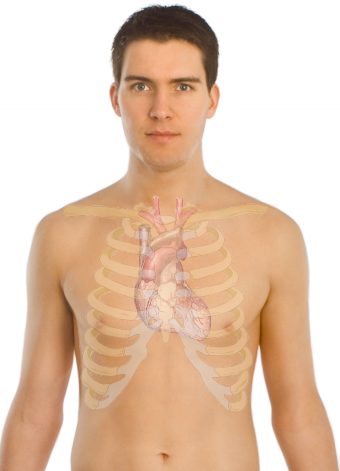Using short, self-assembling bio-degradable protein nanofibres impregnated with a blood-vessel growt h factor, scientists have been able to prevent some of the
h factor, scientists have been able to prevent some of the  negative changes that occur in the heart following a heart attack and boost cardiac recovery.
negative changes that occur in the heart following a heart attack and boost cardiac recovery.
Writing in Science Translational Medicine, Yi-Dong Lin and his colleagues at the Academica Sinica in Taiwan made a biochemical cocktail containing the growth factor VEGF (vascular endothelial growth factor), which promotes the growth of new vessels, and some artificial protein sequences called oligopeptides which plait themselves into short, biocompatible nanofibres when exposed to the salt solution found in body fluids.
The idea was to inject this mix into regions of the heart injured by a heart attack. These fibres would then behave like a slowly-squeezed sponge, steadily releasing the VEGF to boost the blood supply to the damaged area while also providing structural support.
A group of heart-attack afflicted rats were injected with the nanofibre-growth factor mixture at the injury sites in their hearts. A second group of control rats received just VEGF or saline injections without any protein nanofibres.
A month later, the nanofibre-VEGF-treated animals had significantly better cardiac function, showing fewer signs of heart failure, smaller injury sites and less pathological deposition of fibrous tissue compared with the controls. Repeated on pigs, a much closer correlate to humans, the results were the same.
The sustained release of VEGF, the team found, was promoting the formation of nourishing arteries, while the nanofibre structures themselves were encouraging stem cells, both from the blood and from elsewhere in the heart, to migrate into and persist within the heart attack site, helping to promote vessel formation, enact repair and prevent the deposition of harmful fibrous tissue.
According to the team, the nanofibres create a three-dimensional vascular niche that captures circulating cells capable of promoting repair and also provides a scaffold, stabilising the development of new small arteries, to nourish the site.
The nanofibres themselves, the team found, breakdown slowly as the heart repairs itself. About 70% of the injected material still remained one month after injection.
"In conclusion," they say, "NFs are able to create an in-vivo microenvironment for cardiovascular regeneration and also provide positive therapeutic effects after MI in both small and large animals..."









Comments
Add a comment